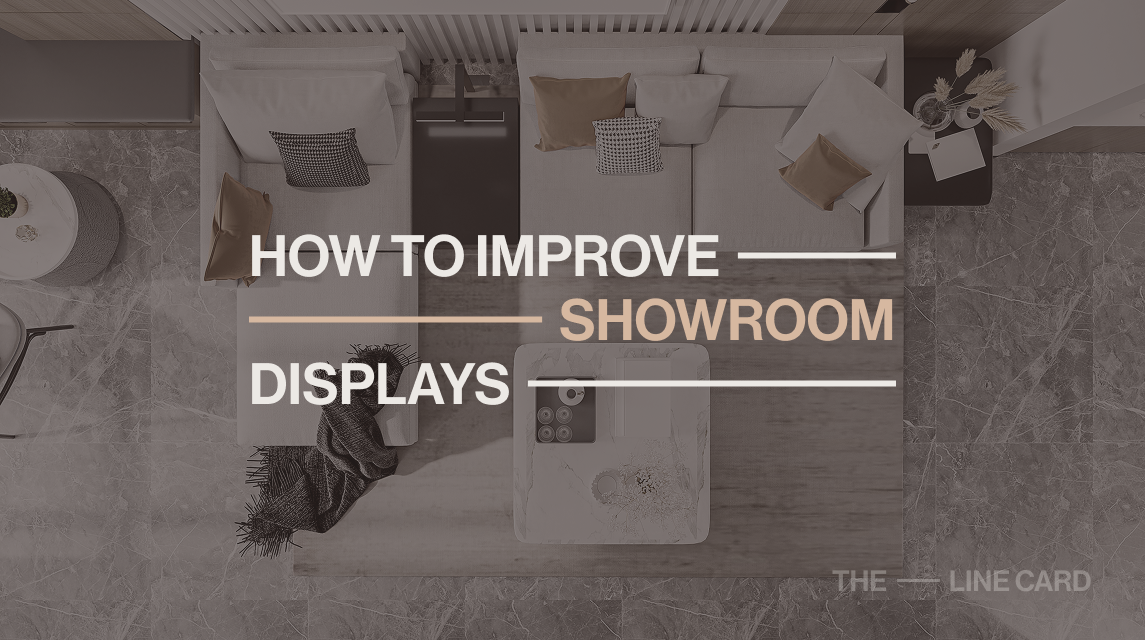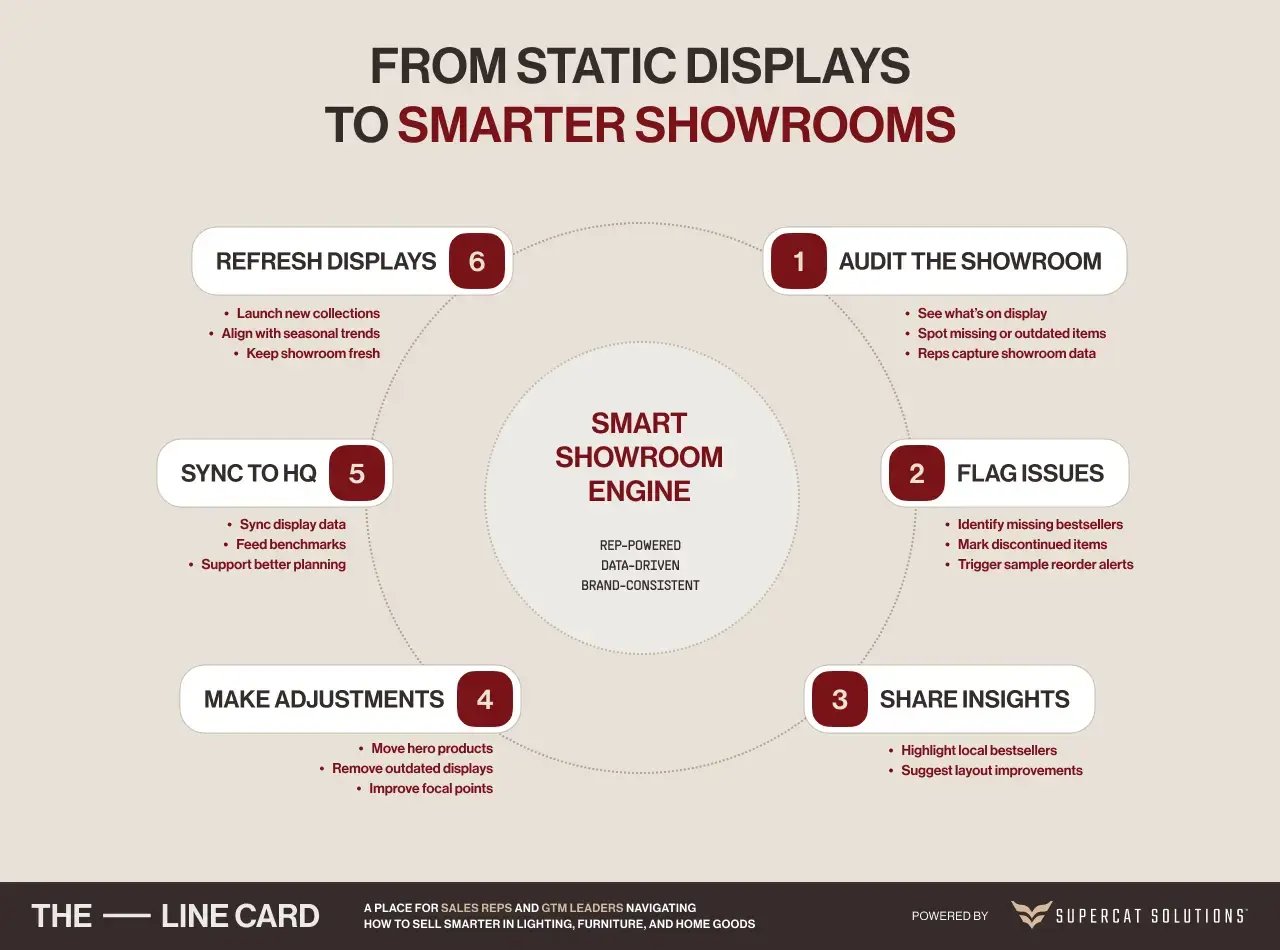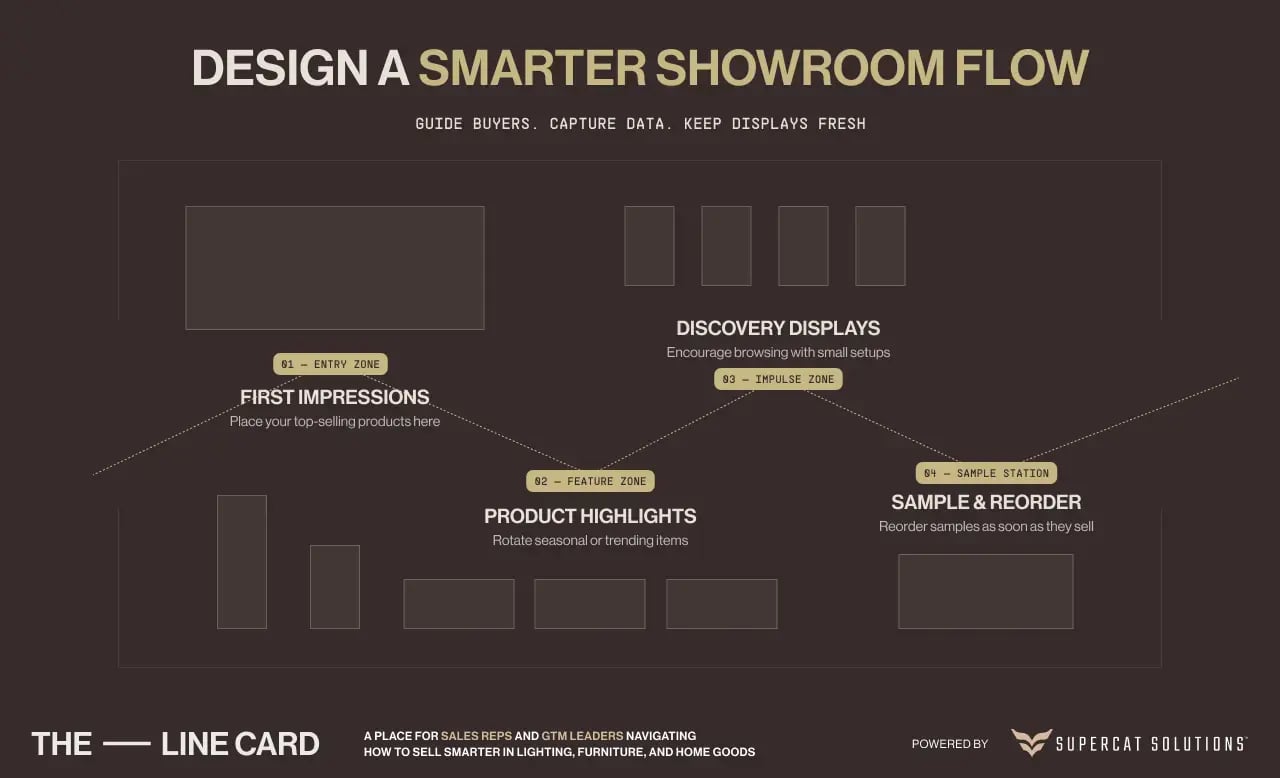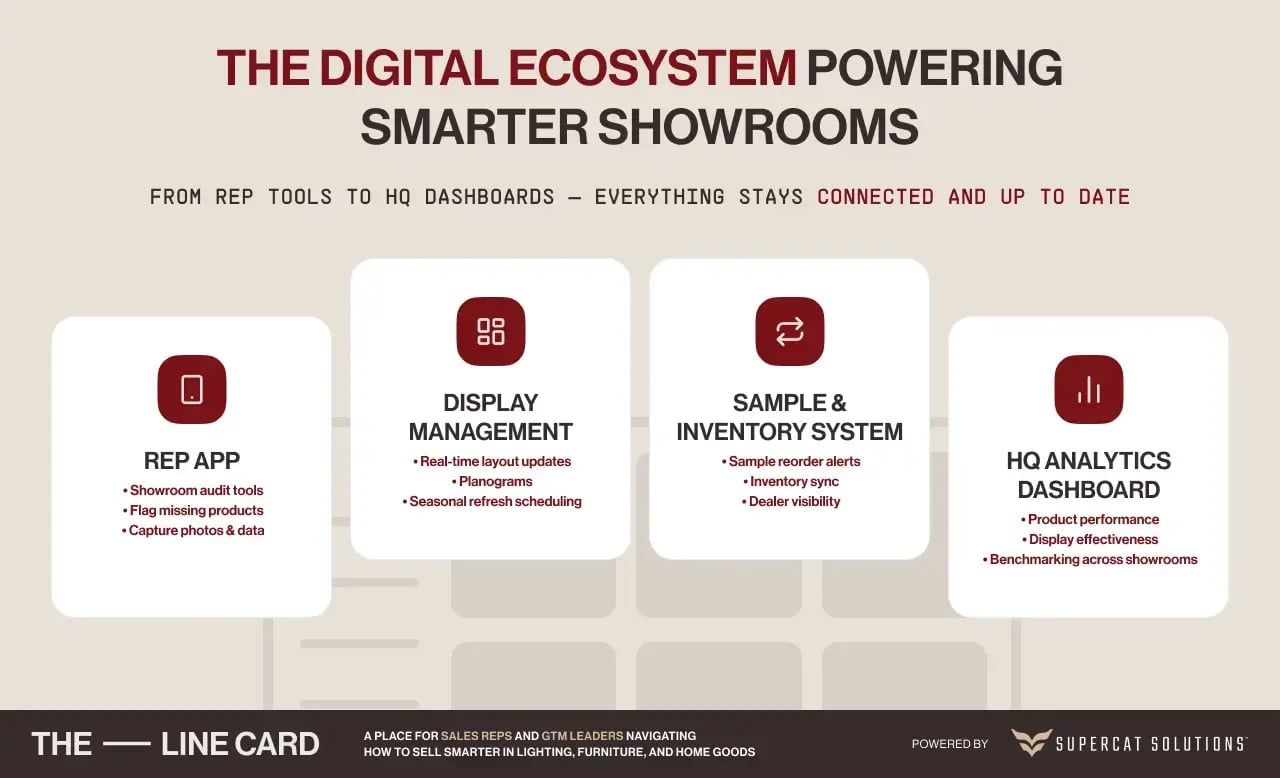
Walk into any furniture or lighting showroom and you’ll see beautifully staged spaces designed to inspire buyers. But behind the polished look, problems often lurk: bestsellers missing from the floor, discontinued items still on display, and reps who don’t know what’s in stock. For manufacturers and distributors, this showroom chaos means lost sales and frustrated customers.
The solution lies in data-driven showroom optimization. By utilizing sales volume, inventory, and display audits, brands can ensure that the right products are always on display, driving both dealer confidence and customer satisfaction.
In this article, we’ll explore proven methods for creating effective showroom displays that increase conversions and help dealers stay ahead of customer expectations.
Common Challenges with Showroom Displays
Even the most polished displays can face hidden issues that impact sales. Common challenges include:
- Bestsellers missing from the floor: Top-performing products are sometimes overlooked or sold off without being reordered, resulting in a loss of revenue.
- Outdated or discontinued items: Older inventory occupies valuable floor space that could be utilized for current collections.
- Inconsistent displays across dealers: When manufacturers rely on multiple dealer showrooms, product placement can vary wildly, affecting brand presentation and sales performance.
- Limited data visibility: Without proper auditing tools, it’s challenging to know which displays are driving results and which are underperforming.
Addressing these challenges is the first step in learning how to effectively improve showroom displays.
How to Improve Showroom Displays
1. Conduct Regular Display Audits
A display audit ensures that the right products are on the floor, positioned effectively, and aligned with current sales priorities. Audits can reveal:
- Missing bestsellers that should be showcased prominently
- Discontinued items still occupy prime space
- Opportunities to reintroduce samples that were sold off
2. Use Product Placement Analysis to Drive Decisions
Not all displays perform equally. By analyzing product placement data across multiple dealers, manufacturers can identify trends such as:
- Which product categories sell better when placed near entrances or grouped together
- Dealer-specific bestsellers that should always be featured
- Display combinations that increase cross-selling opportunities
Some solutions even provide APIs to download global product placement data, giving companies visibility into overall market penetration and rep activity.
3. Reorder Samples Quickly to Maintain Momentum
One of the most common pitfalls in showroom management is failing to replace display samples after they’ve been sold. This leaves empty spaces or gaps in product lines, disrupting the shopping experience.
By implementing systems that flag when items are missing from the floor, dealers can quickly reorder samples, ensuring sales momentum isn’t lost.
4. Optimize Displays Around Customer Behavior
Enhancing the showroom experience involves understanding psychology. It's important to observe how customers navigate through the space.
- Place high-demand products along natural traffic paths.
- Use focal-point displays to draw customers deeper into the showroom.
- Create “speed bumps” with smaller displays to encourage browsing.
Combining behavioral insights with placement data ensures displays sell.
5. Refresh Displays Seasonally or Quarterly
Static displays grow stale, both for customers and staff. A quarterly refresh keeps the showroom aligned with:
- Seasonal buying patterns (holiday décor, summer collections, etc.)
- New product launches
- Shifting customer preferences
Consistency across dealer showrooms also strengthens brand identity, ensuring that customers have a cohesive experience regardless of where they shop.

Empowering Sales Teams to Optimize Displays
Sales teams are the critical link between manufacturers and dealer showrooms. When equipped with the right tools, they can move beyond transactional selling to actively shape display strategies, improve showroom performance, and strengthen dealer relationships.
Capturing Showroom Inventory During Dealer Visits
Reps can use digital tools to log which products are currently displayed, which bestsellers are missing, and which discontinued items still occupy valuable floor space. This eliminates manual note-taking, reduces errors, and gives headquarters an up-to-date view of every dealer’s showroom.
Sharing Dealer-Specific Insights
Every dealer showroom has its own sales patterns and customer behavior. By analyzing and sharing insights, sales representatives can guide dealers toward more effective floor layouts that increase conversion rates and customer satisfaction.
Recommending Adjustments in Real Time
Rather than waiting for post-visit reports, reps can act immediately by suggesting changes such as reordering sold-off samples, repositioning high-demand products, or removing outdated displays. These quick adjustments help dealers maintain momentum and avoid costly display gaps.
Tracking Rep Activity and Ensuring Consistency
With digital systems in place, managers can track rep visits and verify that showroom strategies are executed consistently across all territories. This ensures every dealer receives equal support and that all showrooms reflect the brand’s identity and standards.
Yet, for sales teams to fully unlock this potential, they need access to advanced showroom management tools that make data collection, analysis, and decision-making seamless, which brings us to the role of digital solutions.
Sales Tool for Enhancing Showroom Displays
Modern showroom management has moved beyond guesswork. Digital solutions now allow brands to:
- Capture showroom data in real time
- Analyze dealer-specific sales performance
- Identify gaps in product representation
- Benchmark performance across multiple locations

How SuperCat Helps Improve Showroom Displays
SuperCat’s tools help manufacturers and dealers take the guesswork out of display optimization by:
- Auditing showroom floors to capture which products are displayed, missing, or outdated
- Highlighting dealer bestsellers that should always be on display
- Identifying phase-out or discontinued items that need removal
- Flagging sold-off samples so they can be quickly reordered
- Providing global placement data via API, giving companies visibility into market penetration, dealer performance, and rep activity
With solutions like SuperCat, the process becomes faster, smarter, and more consistent.
Frequently Asked Questions
How can manufacturers improve showroom displays for better sales?
Manufacturers can improve showroom displays by conducting regular audits, analyzing product placement data, and ensuring bestsellers are always visible on the floor. Using digital tools to capture real-time showroom data helps identify missing products, outdated displays, and performance gaps. When sales reps have access to these insights, they can make quick adjustments that boost conversions and dealer confidence.
What are the benefits of using digital showroom management tools?
Digital showroom tools replace manual tracking with real-time data and analytics. They help brands monitor display inventory, compare dealer performance, and ensure consistent product representation across all showrooms. These systems also flag sold-off samples for reordering, identify discontinued items that need removal, and provide visibility into market penetration and rep activity, leading to faster decision-making and measurable sales growth.
Why are sales teams essential to showroom optimization?
Sales teams are the bridge between manufacturers and dealers. Equipped with showroom management apps, reps can log inventory, share dealer-specific insights, and recommend real-time improvements. Their direct involvement ensures that showroom strategies are executed accurately across territories, keeping every display aligned with brand standards and maximizing each dealer’s sales potential.
Ready to see it in action?
Smarter Selling Starts in Your Inbox
Get exclusive playbooks, guides, and case studies delivered monthly